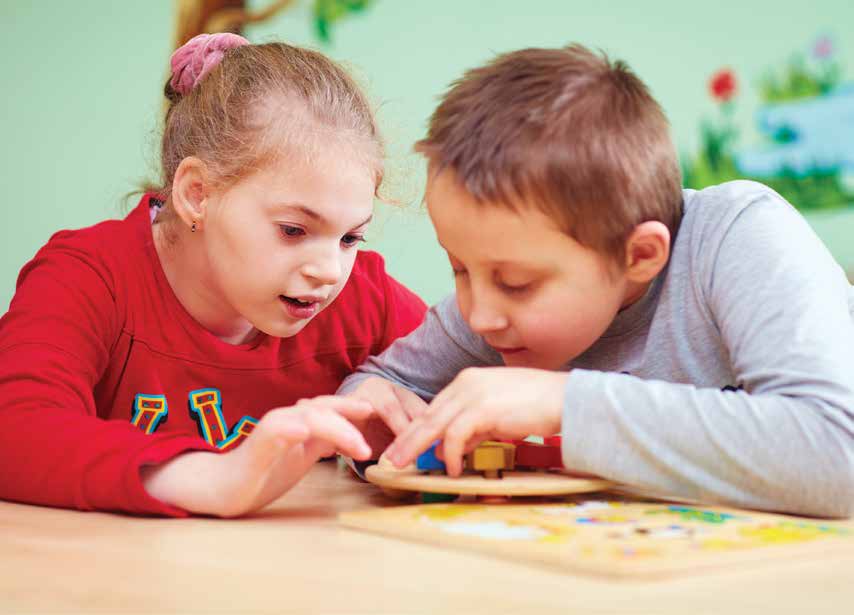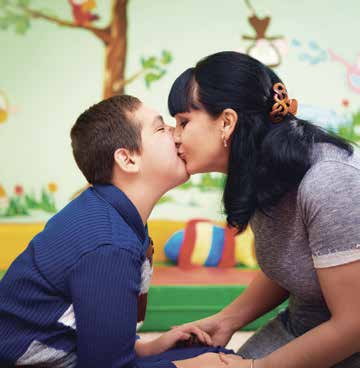
October is Learning Disabilities Awareness Month, a time when people pay particular attention to the challenges that one in five children face when learning basic skills such as reading, writing, and/or math. Predominantly, children diagnosed with learning disorders (LD) are of average or above-average intelligence, but there is an apparent gap between their potential and actual achievement. With appropriate support and intervention, they can achieve success in all aspects of life. We asked Westmark School to share with us some of the latest findings on learning disabilities and advice for parents.
Can you share some of the latest developments in the study of learning disabilities?
Literature on brain research states that 85% of brain growth concludes by age 5; therefore, traditional screening and diagnosis for learning disabilities happens too late to use the most effective interventions for preventing long-term deficits. Currently, Dr. Nadine Gaab, in collaboration with other researchers, is working on developing an app that will examine early predictors of dyslexia and reading impairments in children as young as age 4, giving them the opportunity to reach their full reading potential.
The UCSF Dyslexia Center, known for its newest neuroimaging and genetic techniques, is studying individuals and families to evaluate neurobiology as it relates to cognitive and biological phenotypes (the neural, genetic cognitive, and behavioral expression) of dyslexia. One of their focuses is to work closely with schools and educators to apply the knowledge gained from this unique program to develop early interventions and educational strategies to help children with dyslexia thrive.
How does individualized/personalized/differentiated instruction impact different learning disabilities?
Teaching isn’t a one-size-fits-all profession. All students learn differently, and all students can be successful, but for students with learning disabilities, differentiated instruction is an opportunity for teachers to ‘level the playing field’. It’ s important that instruction be tailored to the needs of each child.
Is it important to use these different types of instruction to make impact with LD?
In the right environment with the right research-based methodologies, these students can achieve, realize their unique strengths, and reach their potential. In the process, they come to understand what their strengths are and how to advocate for themselves both inside and outside of school. This sets children up for success, and that can change the trajectory of their entire lives.
If children are struggling to do well in school, what are some of the first steps they and their parents should take in seeking assistance?
Parents are their children’s best advocates. It is critical that the parents, teacher, and school are a team that works collaboratively in the best interest of the child. Parents should be in touch with their child’s teacher and school and arrange for someone to observe the student to determine the supports needed for success. Clear communications should be established to develop and support the best plan for the child’s learning profile.
Do you have any suggestions for parents who are new to handling learning disabilities?
It is important for parents to remember that a learning disability cannot be cured or fixed; it is a lifelong journey. It is also important for parents to know that they are not alone! Parents need to know their rights and ask their school to conduct an evaluation to determine a potential learning or attention issue. Once the signs have been identified, the appropriate assessment and evaluation will guide the right strategies and environment to help the student.
It is important for both the parent and child to embrace their learning differences so they can not only get the accommodations that they need, but also learn to self-advocate and build confidence in their own intelligence and creativity. With the appropriate support and the right intervention, the student will be able to achieve social, emotional, and academic success.
What are the most common learning disabilities you see?
Learning disabilities is an umbrella term often used to describe more specific learning disabilities such as dyslexia. The most common ones are auditory processing disorder (APD); dyscalculia; dysgraphia; dyslexia; and language processing disorder. Other related disorders include executive functioning and ADHD.
What are the most common symptoms or signs you see in children with learning disabilities?
The symptoms or signs in students with learning disabilities, while varying from child to child, affect development and achievement. Some students show difficulty following directions, poor eye-hand coordination, sensory difficulties, short attention span, disorganization, and/or difficulty discriminating between letters or sounds.
Understood.org is an excellent resource for parents of children with learning and attention issues. NCLD.org is another good online resource. IDALA (International Association of Dyslexia in Los Angeles) offers local support, workshops, and referrals. These online resources and support groups and services designed for these purposes can provide personalized resources and tools, access to experts, and practical tips to support families on their journey.
For more information westmarkschool.org.


